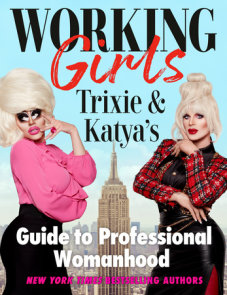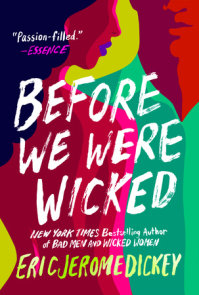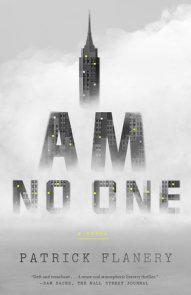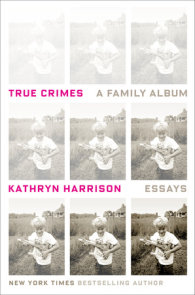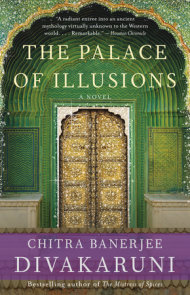TEACHING GUIDE
NOTE TO TEACHERS
In Mama Day, Gloria Naylor has created a work that is at once a contemporary love story, a timeless generational saga, a chillingly believable tale of the supernatural, and a homage to the redemptive power of African-American tradition. It is a novel that spans two worlds. One is the southern barrier island of Willow Springs, inhabited solely by the descendants of slaves, a place exempt from the laws of nature and the often racist laws of man. The other world is New York City: polyglot, multi-racial, and governed by strict and seemingly heartless codes of love and survival. Naylor gives each of these worlds its own narrative and narrator (in fact, she gives New York two); then she brings them together. In doing so, she simultaneously explores and effects several kinds of reconciliation: between the black rural past and the black urban present; between myth and history, individuals and communities, faith and logic, the living and the dead. Not least of all, she symbolically reconciles the scattered children of Africa with their first, true home.
On Willow Springs the presiding presence is Mama Day, nearly one hundred years old and still going strong. Mama Day knows herbal cures and can summon lightning with her walking stick. She knows the true story of "the great, grand Mother" Sapphira Wade, who in 1823 persuaded her master to deed the island to his slaves, "bore him seven sons in just a thousand days" (p. 3), and killed him before she vanished in a burst of flame. Most of all, Mama Day knows that her world—any world—runs on the magic of belief.
These are the truths she will try to impart to her great-niece, Cocoa, a woman almost as formidable as Mama Day herself, and more important, to Cocoa’s New York–bred husband, George. When George accompanies his wife on a fateful visit to Willow Springs, Naylor’s two worlds—and seemingly opposing realities—are brought together. As Cocoa falls victim to the island’s darker forces, this meticulously rational and self-reliant man discovers that the only way he can save her is by casting reason and self-reliance aside and by submitting to the wisdom of Mama Day, a woman he strongly suspects is crazy.
Mama Day affords the pleasures of both the "classical" novel—an intricately structured plot replete with doublings and foreshadowings—and the folk tale, with its oral rhythms and supernatural events. Unlike much contemporary fiction, it also imparts lessons about how we should live. Students who read this book will come away bearing some of the wisdom of Mama Day herself, perhaps most of all the understanding that "everybody wants to be right in a world where there ain’t no right or wrong to be found" (230).
TEACHING IDEAS
The questions, exercises, and assignments that follow are designed to guide your students through Mama Day. We have included questions that test reader comprehension, themes for in-class discussion, and suggestions for independent research and writing. Students should be encouraged to keep journals in which they record their responses to the novel and write down questions of their own. In addition, you may wish to suggest other books that explore themes similar to those developed in Mama Day or that supply further cultural and historical background. We have included some of these in the guide’s final section.
DISCUSSION AND WRITING
Book I:
Willow Springs
1. Who was Sapphira Wade?
2. What is the significance of the year 1823? What role does it play in the legend of Sapphira Wade? How has it crept into the popular speech of present-day Willow Springs?
3. How are Mama and Abigail Day related to Sapphira?
4. What peculiar geographical circumstance has kept Willow Springs the sole property of the descendants of slaves?
New York
1. How do George and Cocoa meet?
2. Why does Cocoa seem so wary of men, and so cynical about people in general? What terms does she use to describe other African-Americans, whites, Asians, and Jews? What is George’s later comment about this habit?
3. Where—and how—was George brought up? How has his upbringing shaped his view of the world?
4. What is Cocoa’s given name? Whom is she named after? (151)
Willow Springs
1. What is Mama Day’s given name?
2. How do Mama Day and Abigail greet each other? What is the origin of this custom? In what ways does it sum up the rest of their relationship?
3. In what way have the Day women been unlucky?
4. What was Cocoa like as a baby? In what ways did her behavior then foreshadow her character as an adult?
5. Who is Dr. Buzzard? How does he make his living? Describe his relationship with Mama Day.
New York
1. Who is George’s girlfriend when he meets Cocoa? What is the state of their relationship?
2. How does Cocoa sum up the respective roles her grandmother and great-aunt played in her upbringing? Why does she believe that she "would have been ruined for any fit company" (58) if she’d been raised by Abigail alone?
3. Why is George and Cocoa’s first date so disastrous?
Willow Springs
1. What happened to Ruby’s first husband? What does this story tell us about her character?
2. What is the reason for Bernice’s illness? How does Mama Day go about diagnosing her? How would you describe the kind of medicine she practices?
3. Why are authorities on the mainland reluctant to meddle in the affairs of Willow Springs?
4. What kind of help does Frances request from Mama Day? Why does she refuse?
5. What is the meaning of the expression "working roots"?
6. Why did Abigail name her first child Peace? Why did Mama Day beg her not to do this? What does she mean when she thinks, "[Abigail] only lost one of her babies to Mother, I lost them all" (95)?
New York
1. On what pretext do George and Cocoa go on seeing each other? Why is Cocoa so surprised by George?
2. How does Cocoa’s language change in the course of this and later sections? What do those changes indicate about the change in her feelings for George?
3. How does George change as he draws closer to Cocoa?
4. What crucial thing do George and Cocoa have in common?
Willow Springs
1. What is Candle Walk? What holiday does it replace on Willow Springs? What are its supposed origins and how has the story of those origins changed over the generations?
2. How does Miranda sum up Cocoa’s character?
3. What do we learn about Ruby, Frances, and Junior Lee? Why has Frances gone mad?
4. How has Bernice changed? What gift do she and Ambush bring Abigail and Miranda? How do the sisters react to it?
5. What is "the other place"? Why does Abigail refuse to go there?
6. Why does Miranda start to weep while on her way to the other place? Who was the man who died of a broken heart?
New York
1. The more deeply Cocoa falls in love with George, the angrier she becomes at him. Why is this so?
2. What great disappointments have taken place in George’s life? How do these disappointments affect his behavior toward Cocoa?
Willow Springs
1. What three events are causing talk among Willow Springs’ inhabitants? How are they related?
2. What words of George’s have given Mama Day such a high opinion of him? What significance does she see in them?
3. What transpires between Mama Day and Bernice at the other place?
New York
1. How does George see Cocoa when he watches her sleeping beside him (140-43)? Compare his impressions of his wife to the previous section’s description of the entranced Bernice. What is the difference in these sections’ visions of women’s bodies and the way they work?
2. What aspect of George’s character causes Cocoa the greatest difficulty? What are the eventual consequences of this flaw?
Willow Springs
1. How has Bernice changed since the preceding section?
2. Whose voices do we hear when Miranda and her great-niece visit the cemetery?
3. In what ways have different Day women broken their men’s hearts?
4. Why does Miranda send Bernice, Dr. Buzzard, and Junior Lee away before Cocoa can join them?
5. Why is Bernice so angry when people call her son "Chick"? Why might she be so protective of him?
New York
1. How do Cocoa and George eventually make peace? What lesson has she learned from her great-aunt and grandmother?
2. What is the meaning of the sentence, "Any summer we crossed over that bridge would be the summer we crossed over" (165). What figurative or symbolic meanings are suggested by the phrase "crossing over"?
Book II:
1. What does Clarissa find underneath the trailer? What is its significance?
2. What are George’s first impressions of Abigail and Miranda? Why does he feel envious?
3. What similar dreams do George and Cocoa have on the same night? How do these dreams foreshadow events later in the book?
4. What secret is Bernice keeping from her husband?
5. Why do men on Willow Springs keep playing poker with Dr. Buzzard, even though they know he always wins?
6. How does George end up beating Dr. Buzzard at poker? What is Dr. Buzzard’s response? What does George’s determination—and his method of winning—suggest about his character?
7. What premonition does Cocoa have when she takes George to her family cemetery? What events in her family history might be responsible for her fears?
8. What provokes the fight between George and Cocoa on pages 233-35? What are its consequences?
9. On what pretext does Ruby lure Cocoa to her house? What does she do to her there?
10. How would you describe the language Naylor uses to describe the storm on pages 249-51? What is the source of the sections printed in italics? How does the storm’s movement parallel the "middle passage" that brought African slaves to the New World? Why does the narrator refer to the storm as "the workings of Woman"?
11. What damage does the storm cause?
12. Why does Bernice return to the other place? Why does Mama Day turn her away?
13. What are the symptoms of Cocoa’s illness? At what point does it become clear that her malady is not natural?
14. What measures does Miranda take to save her great-niece? Why are her efforts inadequate?
15. How does George try to save Cocoa? How are his efforts thwarted? What indications do we receive that George’s plan would be useless even if he were able to carry it out?
16. Why is George at first unwilling to accept Mama Day’s help? What eventually changes his mind?
17. Describe the "standing forth" ceremony at Charles Duvall’s funeral. Why do the mourners address the dead child as though he were still alive? What does this ceremony suggest about the nature of life and death?
18. How does Miranda avenge herself on Ruby?
19. Whom does she encounter at the other place? What does she learn while waiting for George?
20. What does Mama Day instruct George to do? What mistake does he make in carrying out her instructions? What are the consequences of this error? How does George’s death fulfill the destiny of the Days?
Talking it over
1. On page 10 we are told that people on Willow Springs know the story of Sapphira Wade "without a single living soul really telling a word." How can a community know its history if that history remains untold? What distinction does this book make between spoken and unspoken truth? Which kind of wisdom does it value more highly?
2. In what way is Mama Day a book about people’s perceptions and misperceptions—not only of each other, but of reality itself?
3. Mama Day possesses a number of powers that might be called supernatural: she knows the secrets of people she sees on television; she can turn flowers into butterflies and cure a woman’s infertility by magic. Yet she also describes what she does as "mother-wit disguised with hocus pocus" (97) and maintains that "she ain’t never tried to get over nature" (262). How can both of these things be true? How does Mama Day view her powers? Compare her "magic" to the magic practiced by Ruby and Dr. Buzzard.
4. On page 61 George observes, "My city was a network of small towns." What does he mean by this? How does George’s New York compare to Willow Springs? In what ways is Mama Day a book about small towns and their inhabitants and histories?
5. The sections of Mama Day that are set in Willow Springs contain a great deal of gossip. What sorts of information does the gossip of Willow Springs impart? What does gossip tell us about the community in which it circulates? In what ways is Mama Day a book about "the oral tradition"—about the kind of knowledge that is not imparted by books but by people’s gossip, stories, and folklore?
6. George and Cocoa fall in love reluctantly. And, even after they fall in love, they often seem to punish each other for it. Contrast their fear of emotional connection with the attitudes of Miranda and Abigail, who, like George and Cocoa, have suffered because of love. In addition, the two sisters know a secret that George and Cocoa do not: that each of the preceding Day women has broken the heart of the man who loved her. How does Naylor develop the theme of love—between man and woman, mother and child, grandmother and granddaughter, and sister and sister—in this book? What connections does she draw between love and heartbreak?
BEYOND THE BOOK
1. In describing the peculiar logic that prevails on Willow Springs, Naylor’s narrator says: "Being we was brought here as slaves, we had no choice but to look at everything upside-down" (8). In what ways do people on Willow Springs see things "upside-down"? In what ways is Willow Springs an upside-down or mirror image of New York? What other reversals and inversions occur in this book?
2. Each of the major characters in Mama Day has a key phrase that sums up his character and world-view: Cocoa’s is, "Nothing stays put" (63); George’s key phrase is "Only the present has potential" (23); Mama Day’s might be "Folks see what they want to see. And for them to see what’s really happening… they gotta be ready to believe" (97). Discuss these phrases at length. What do they suggest about Cocoa, George, and Mama Day? How do these people’s characters and beliefs clash in the course of the book? How do they change?
3. Mama Day is full of aphorisms that tell large truths about the world inside and outside the book. Write an essay analyzing one of these, suggesting what it means and what role it plays in the book as a whole: a."I had what I could see" (27) b."The only miracle is life itself" (43) c."Every blessing hides a curse, and every curse a blessing" (78) d."Lead on with light" (110) e."A man dies from a broken heart" (118) f."I was losing you because of my fear of losing you" (129) g."Ain’t no hoodoo anywhere as powerful as hate" (157) h."It’s all happened before, and it’ll happen again with a different set of faces" (163) i."A woman shouldn’t have to fight her man to be what she [is]; he should be fighting that battle for her" ( 203) j."You were entering a part of my existence that you were powerless in. Your maps were no good here." (177) k."I can tell you the truth, which you won’t believe, or I can invent a lie, which you would" (266) l."There’s only the sense of being. Daughter" (283) m."She needs his hand in hers—his very hand—so she can connect it up with all the believing that had gone before" (285)
4. Discuss the legend of Sapphira Wade—"the great, grand Mother" who began the Day lineage. What role does this myth play in Willow Springs? How is Sapphira’s half-remembered story echoed by the stories of her female descendants? What role, in general, do mothers play in Willow Springs and in Mama Day?
5. One of the techniques that Gloria Naylor uses to great effect in this novel is foreshadowing—hinting at themes and events that will gradually become more explicit and meaningful in her story. Discuss how Naylor uses foreshadowing to develop one of the following: A. the theme of the mother, B. men with broken hearts, C. mistrust and belief, D."the other place," E. magic, good and evil, true and false, F. the storm, G. the relationship between Abigail and Miranda Day, H. the theme of the sacrificed child.
6. In the fictional Willow Springs, Gloria Naylor has constructed an alternate world, populated exclusively by African-Americans and exempt from many of the crueler turns of America’s racial history: for example, Willow Springs may be the only place in the American South where blacks have been able to vote uninterruptedly since the nineteenth century. Yet Willow Springs also embodies—and in some ways magnifies—the history of black Americans, beginning with the fact of slavery itself. In what ways does Naylor use her invented world to comment on America’s racial history? What does she accomplish by creating a world in which the races are wholly separate?
7. Mama Day makes use of many traditional African-American customs and beliefs, like Candle Walk, conjure women, working roots, and the use of brooms as symbolic barriers. Drawing on independent research, write a paper on one of these traditions. Find out about a tradition in your own family, community, or ethnic group, perhaps by consulting grandparents or other older relatives. What are the origins of this tradition? How has it changed over the generations? How is it observed today?
8. Mama Day’s given name is Miranda and Cocoa’s is Ophelia. Both of these names appear in Shakespeare’s plays; Miranda in The Tempest and Ophelia in Hamlet. Research one of these plays and write an essay comparing Shakespeare’s heroines to their namesakes in this novel. Why might Gloria Naylor have chosen these names for her characters?
9. Gloria Naylor has written other novels set in self-contained communities: the inner-city of The Women of Brewster Place and the mythical diner of Bailey’s Cafe. Compare the worlds of these books. Why do you think she has chosen to set these books in such highly compressed "universes"?
10. Mama Day employs the literary technique called "magical realism," in which elements of dreams, fairy-tales, and mythology are combined with recognizable everyday reality. Which characters, settings, or events in this novel are "realistic"? Which ones are "magical"? What role does magic play on Willow Springs? Compare Gloria Naylor’s use of this technique to the magical realism of Gabriel García Márquez’s One Hundred Years of Solitude, Louise Erdrich’s Tracks, or Zora Neale Hurston’s Of Mules and Men.
OTHER TITLES OF INTEREST
Isabel Allende: The House of the Spirits; Toni Cade Bambara: Gorilla My Love; Louise Erdrich: Tracks; Gabriel García Márquez: One Hundred Years of Solitude; Ernest J. Gaines: A Lesson Before Dying, A Gathering of Old Men; Zora Neale Hurston: Of Mules and Men, Their Eyes Were Watching God; Charles Johnson: The Middle Passage; Gayl Jones: Corregidora; Paule Marshall: The Chosen Place, the Timeless People; Toni Morrison: Sula, Song of Solomon, Beloved; Gloria Naylor: The Women of Brewster Place, Linden Hills, Bailey’s Cafe; John Edgar Wideman: All Stories Are True.
ABOUT THIS GUIDE
This teacher’s guide was written by Peter Trachtenberg. Peter Trachtenberg has taught writing and literature at the New York University School of Continuing Education, the Johns Hopkins University School of Continuing Education, and the School of Visual Arts.
COPYRIGHT
Copyright © 1994 by VINTAGE BOOKS
For more information, please email acmart@randomhouse.com or write to:
Random House Academic Marketing
1745 Broadway, 20-2
New York, NY 10019
×
Become a Member
Just for joining you’ll get personalized recommendations on your dashboard daily and features only for members.
Find Out More Join Now Sign In







